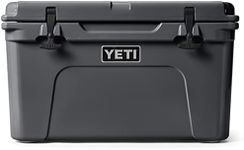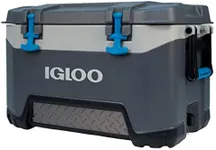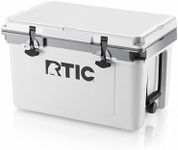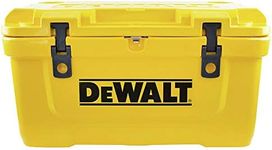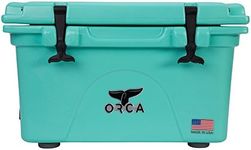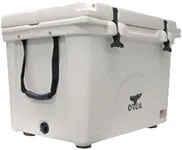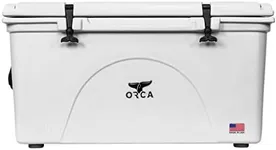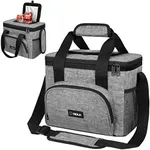Buying Guide for the Best Roto Molded Coolers
Roto-molded coolers are known for their durability and excellent insulation properties, making them a popular choice for outdoor enthusiasts, campers, and anyone needing to keep items cold for extended periods. When choosing a roto-molded cooler, it's important to consider several key specifications to ensure you select the best fit for your needs. Understanding these specs will help you make an informed decision and get the most out of your cooler.CapacityCapacity refers to the amount of space inside the cooler, usually measured in quarts or liters. This spec is important because it determines how much you can store inside the cooler. Small coolers (20-40 quarts) are great for day trips or personal use, medium coolers (40-70 quarts) are suitable for weekend getaways or small groups, and large coolers (70+ quarts) are ideal for extended trips or larger groups. Choose a capacity based on how much you need to store and how long you need to keep items cold.
Ice RetentionIce retention indicates how long the cooler can keep ice frozen, which directly affects how long your items will stay cold. This is crucial for longer trips where you won't have access to fresh ice. Ice retention can vary from a few days to over a week. If you plan on using the cooler for extended periods without access to ice, look for models with longer ice retention times. For shorter trips, a cooler with a few days of ice retention may suffice.
DurabilityDurability refers to how well the cooler can withstand rough handling and harsh conditions. Roto-molded coolers are generally very durable due to their construction process, which creates a single, seamless piece of plastic. This makes them resistant to impacts and less likely to crack. If you plan on using the cooler in rugged environments or for heavy-duty use, prioritize models known for their high durability. For more casual use, standard durability should be sufficient.
WeightWeight is the overall heaviness of the cooler when empty. This is important because it affects how easy the cooler is to transport. Lightweight coolers are easier to carry but may sacrifice some durability or insulation. Heavier coolers are more robust and often have better insulation but can be cumbersome to move. Consider how often you'll need to transport the cooler and whether you'll have help carrying it. Choose a weight that balances portability with your need for durability and insulation.
Portability FeaturesPortability features include handles, wheels, and other design elements that make the cooler easier to move. These features are important for convenience, especially if you need to transport the cooler over long distances or rough terrain. Coolers with sturdy handles and wheels are easier to maneuver, while those without may require more effort to carry. Think about where and how you'll be using the cooler and choose one with portability features that match your needs.
Lid Seal and LatchesThe lid seal and latches ensure the cooler is tightly closed, which is crucial for maintaining temperature and preventing leaks. A good seal and sturdy latches keep the cold air in and the warm air out, enhancing ice retention. Look for coolers with high-quality gaskets and secure latches. If you need the cooler to stay cold for long periods or in hot environments, prioritize models with excellent sealing and latching mechanisms.
Drainage SystemThe drainage system allows you to easily remove melted ice and water from the cooler. This is important for maintaining the cooler's efficiency and cleanliness. A good drainage system will have a well-placed, easy-to-use drain plug that doesn't require you to tip the cooler. If you plan on using the cooler frequently or for extended periods, a convenient drainage system can save you time and effort. Choose a cooler with a drainage system that suits your usage patterns.
